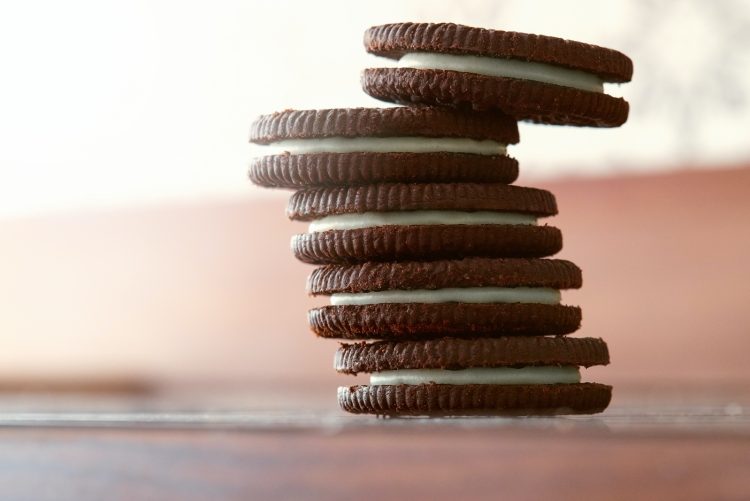- Home
- Nieuwsbrieven
- Intellectual property: A key ingredient for your Food and Drink business (Part 2)
Intellectual property: A key ingredient for your Food and Drink business (Part 2)
Posted on May 06, 2020
In our previous blog we looked at how Food & Drink manufacturers can protect their brand and their physical identity from copyists by using trade marks and design rights. However, there is much more to a new food or drink than distinctive branding and an original appearance.
Creating a new product also requires a great deal of trial and error, a process that leaves you - as the creator - with a great deal of hugely valuable technical knowledge and ‘know-how’ that will be highly valuable to you. You need to be mindful that your production methods and the way you combine your ingredients can be vulnerable to copying, and not just your product’s branding.
And, just as hesitating to file the required trade marks or designs could leave you exposed to copyists, if you don’t file the patents you need, or safeguard your trade secrets effectively, you could be leaving the door open for your competitors to encroach on your space and impact on your ability to trade as you’d planned.
Patents vs. Trade Secrets
Patents allow you to protect the technical details of your new product, or its method of manufacture. Patents have a limited term (20 years from the filing date), and must be filed before technical details of your product or method of manufacture become publicly available. Once the term has run out, anyone is free to use your invention. You may have heard of this in the pharmaceutical sector – the developers of a new drug enjoy an initial period where only they are allowed to make and sell their patented drug. During this period, they get to set the price of the drug, allowing them to recoup the enormous costs of developing the product. Once the patent expires, so-called ‘generic’ manufacturers are free to enter the market, lowering the price for consumers.
A well drafted patent can provide flexible protection because its focus will be on function – in food and drink, this may be the key combination of ingredients that provide your product’s signature taste/texture/feel, or the unique steps of your manufacturing method that have made it possible to commercialise your product. This means that you may be able to stop a competitor launching a ‘me-too’ product, even if they have given their product a different appearance. Patents are monopoly rights, meaning that you don’t have to prove that a competitor copied your product or method of manufacture, all that is required is that they are doing something that falls within the area that you have ‘claimed’ in your patent.

‘Trade secret’ is the legal term for any commercially sensitive information at the heart of your production process that you keep confidential. One of the best-known examples of a trade secret is the Coca-Cola recipe, first devised in the 19th century and still shrouded in secrecy today. Trade Secrets can provide perpetual protection for the commercially sensitive information, provided of course that you can actually maintain the secrecy.
You may have many trade secrets, including your precise formula and nuances in your manufacturing process. However, your most valuable trade secrets will those that give you the edge over the competition and keep your customers coming back for more. Challenging a third party that you believe to be making use of your trade secrets can be difficult. You will need to show that your trade secret has been ‘stolen’, and that will require you to be able to identify exactly what your trade secret is, and to demonstrate that it was indeed secret.
Patent Protection for your recipes and processes
If your recipe or production process has allowed you to overcome some technical difficulty in making your product, for example because you have had to invest your time, skill and/or labour into finding the best combination of ingredients or into designing an efficient manufacturing process, you may have a ‘patentable invention’.
In order to get a patent granted for your invention, you will need to show that:
- What you have created is novel – i.e. the same recipe and/or process has not been described before, anywhere in the world at any time.
- Your creation is inventive – this means that your recipe and/or process is not simply an obvious modification of an existing recipe/process, and that it isn’t merely a straightforward combination of two similar known recipes/processes. Although ‘inventiveness’ is an important for obtaining a granted patent, you should think in terms of an inventive ‘step’ rather than ‘leap’ – inventions do not have to be ground-breaking to be non-obvious.
- You will also need to make sure that your patent application provides enough information for a skilled person to reproduce your recipe/process. This is central to the ‘deal’ that patent systems offer to inventors: the inventor is given a monopoly right to stop anyone else using the invention for a fixed period of time in exchange for explaining to the public how the invention works. Once the term of a patent runs out, the inventor has had their benefit, and everyone else is free to use the invention for their own purposes.
If you are successful with your application and your patent is granted, it will allow you to stop anyone else from using your invention until the patent expires (20 years after filing the application, provided that you pay annual ‘renewal fees’ to maintain the patent). A well drafted patent can often provide protection not only for the exact recipe/process that you are using commercially, but also for similar recipes/processes that offer the same advantages. This can help you stop competitors from mimicking your invention without copying it exactly.
You should keep in mind that obtaining commercially useful patent protection for a new invention can be costly. Also, it is possible that you will find that the invention you have devised was in fact already known. Patent offices examine patent applications, and search for earlier disclosures to check that what you are claiming is indeed novel and inventive. Although it is unusual to end up being unable to get any patent protection at all, you may end up not being able to get a patent providing the broad protection that you had hoped for. We would always advise you to discuss your invention with an experienced patent attorney so that you can work out if what you have is novel, inventive and/or offers an industrial applicability.

Protecting your Trade Secrets
Given the enormous part that ‘know-how’ plays in the Food & Drink industry, it is no surprise that many manufacturers make enormous efforts to protect their trade secrets. However well you protect your secrets, you should make preparations for how to deal with any breach of confidentiality. For example, you may need to deal with an employee, or former employee, sharing confidential information with a competitor, innocently or otherwise. You may also need to take action against a sub-contractor or partner organisation that you have entrusted your confidential information with, for example under a manufacturing agreement.
A trade secret only really exists if you can identify it, and demonstrate that it is secret. This means that you should document and date as many details of your recipe and manufacturing processes as possible, and keep that documentation up to date if and when you make any modifications. You could think of the documentation as a how-to guide that would allow someone else to recreate your product and/or production method from scratch. You also ought to put into place a procedure for maintaining confidentiality. This could include a protocol for handling your documentation (where it is stored, who has access to it, how access is monitored, and under what circumstances it can be shared, for example), and clauses in employment contracts.
You might expect that trade secrets have become less important in recent times, given the state of the art laboratories food and drink companies now have at their disposal. However, while a clever chemist may be able to ascertain product ingredients (which would of course also need to appear on the packaging for regulatory compliance in most countries), final food products are often complex mixtures that are very difficult to ‘reverse engineer’.
Conclusions
It is important to consider how best to protect your intellectual property, and to regularly review your strategy as your business develops. Some inventions are better protected by keeping details secret. On the other hand, patent protection may be more suitable in situations where it is not possible to keep details secret. For example, it may be possible for a competitor to reverse engineer your invention, or you may need to partner with a third party and share details of your invention with them so that it becomes more difficult to control your secrets.
We trust that parts 1 and 2 of this blog have highlighted just how vital it is for Food & Drink producers to protect their intellectual property rights.
Your ideas, your methods and your brand identity will be the cornerstone of your future success and if they’re not adequately protected, you may find your competitors have used the gaps you’ve left to their advantage. However, if you do decide to put the right protection in place from the start, you will reap the benefits as your business and your customer base begins to grow.
Author

Tom Turner Partner